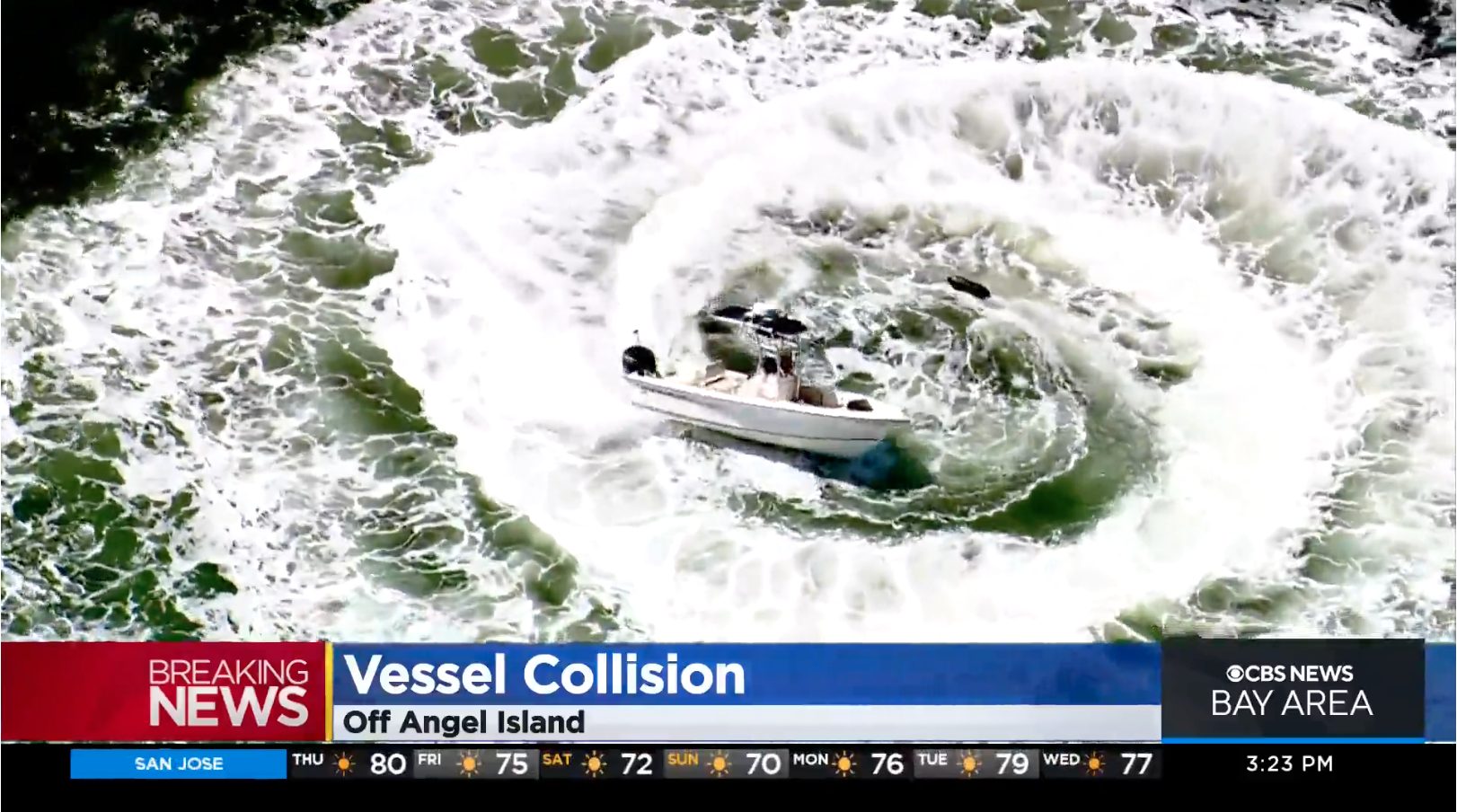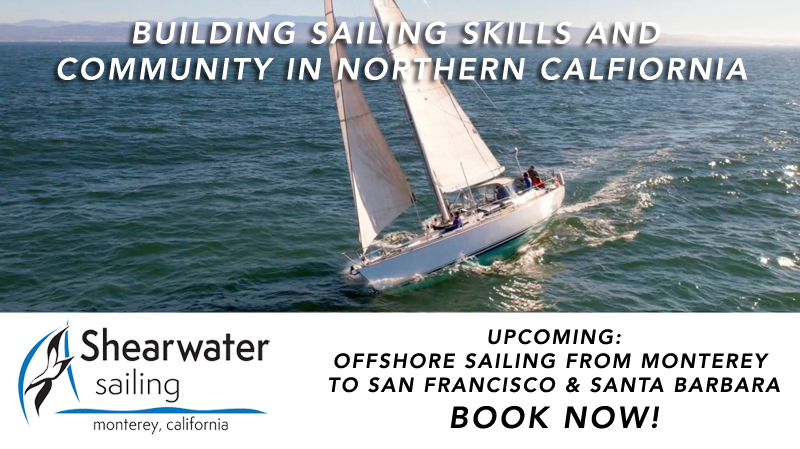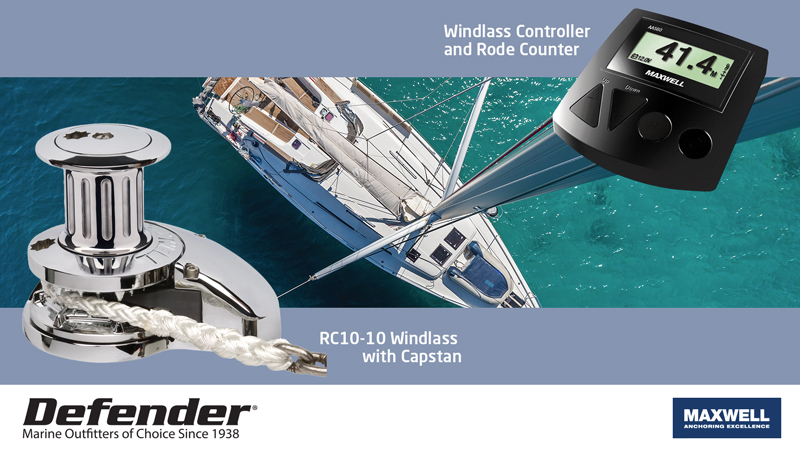
The Pacific Cup Sails Off into the Big Blue Blob
From a high point of 90 boats plus a waiting list, natural attrition, plus a few pandemic-driven issues, pared down the list of Pacific Cup starters to 63. “It’s around what we expected,” says Jim Quanci, commodore of the Pacific Cup Yacht Club. “Things happen in life and on the water. Low 60s makes for a nice comfortable crowd at both ends of the race.”
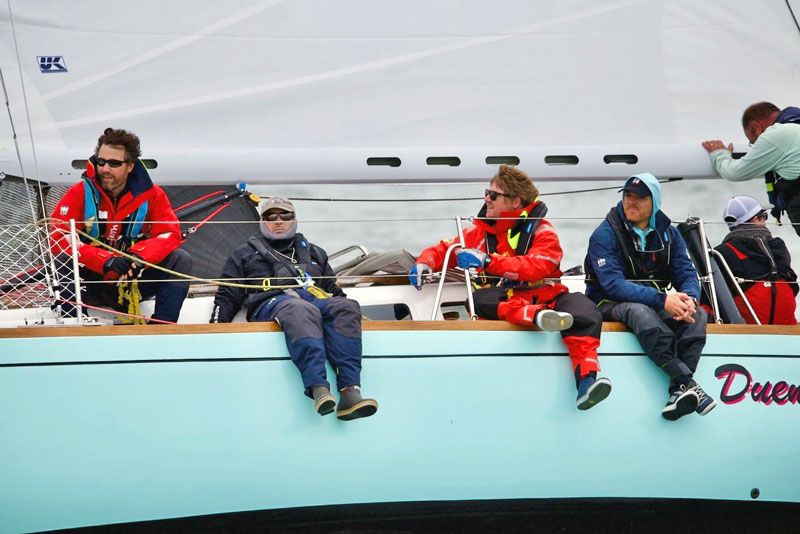
Monday, July 4
Monday’s starters struggled to get offshore. In light wind and the uncertain currents, boats tried different directions.
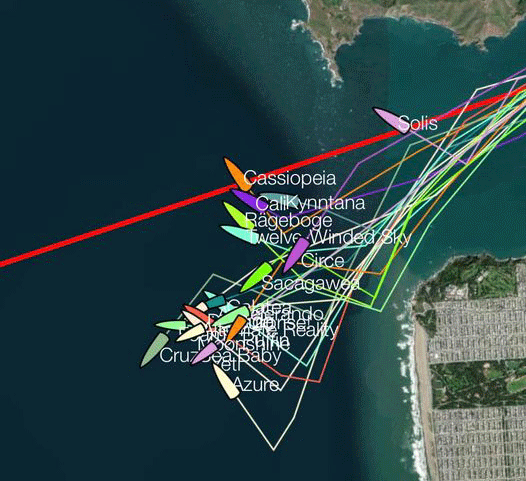
Circe, Tony Bourque’s Freedom 40/40, sailing with family in the Cruising Division, encountered a number of issues underway, the most alarming of which was a leak at the propeller shaft. They made the difficult decision to turn back during the night.
“We got off to a grand start, and then things just started failing,” reported Tony. “One after another. New things. Things that had been gone through carefully. Things that had been fully tested in our much-more-difficult-conditions qualifying sail. And some of those things could become serious safety issues. So I made the difficult decision to turn around. We are back at Richmond YC licking our wounds and figuring out next steps. Obviously we are very disappointed.”
One of Friday’s scheduled starters, Wizard, a Volvo Open 70, was discovered to have suffered damage at the head of the keel, which led to delamination around that area — not suitable for an ocean crossing. They’ll get that fixed before heading Down Under for the Rolex Sydney Hobart race in December.
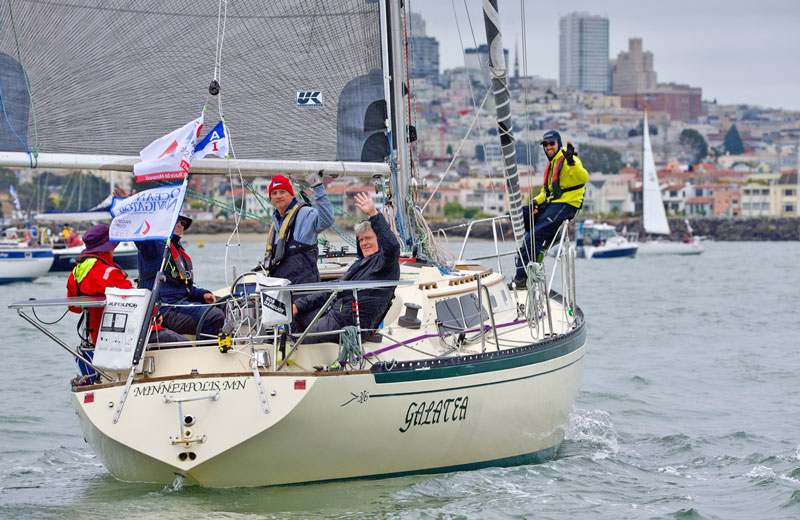
One of the crew on a boat that withdrew earlier, Amber Moffat, just found out on Monday that she’d gotten a ride on the Express 37 Limitless that started on Tuesday. “It was last-minute, as they lost a crew member due to catching COVID. I had a few hours to pack my bags.”
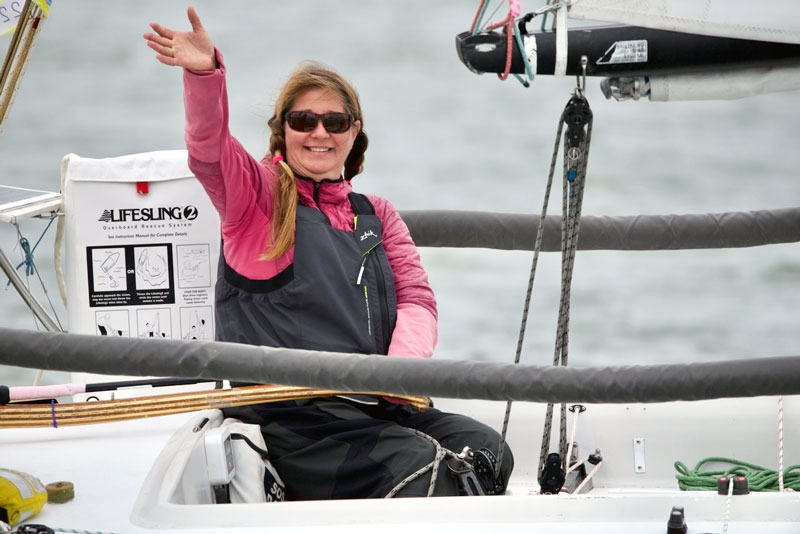
Three doublehanded Moore 24s, Accelerando, #128, with Erica Mattson Siegel and Robin Jeffers; Foamy, #129, with Bill and Melinda Erkelens; and Puffin, #62, with Kelly Gregory and Patrick Haesloop, were among the Monday starters. This is the closest group to a one-design class in the race. As of this morning (July 6), Accelerando, sailing closest to the rhumbline, was leading the threesome.
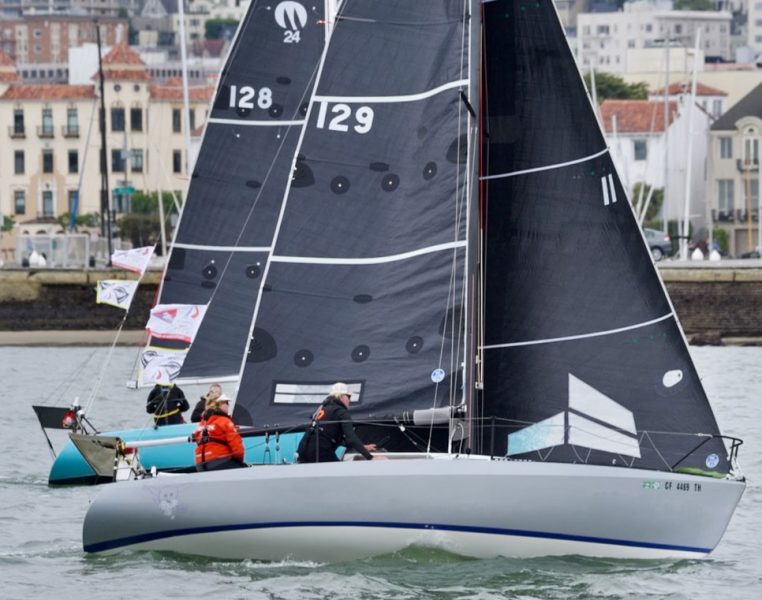
Tuesday, July 5
The Monday starters endured a long, tedious night at sea in light but comfortable conditions. The fleet divided. Some boats headed north, and some south. A couple split the difference. Light winds make for a wide array of responses.
Wednesday, July 6
A check of the tracker this morning shows almost all the boats sailing south of the rhumbline, some, including the Erkelens on Foamy, taking a deep dive. The only two north of the rhumbline are Brian and Amanda Turner, doublehanding the Beneteau 10R CruzSea Baby, and Rodney Pimentel and crew on the Cal 40 Azure.
Currently leading their division by dint of heading more toward Hawaii than other boats, the couple on CruzSea Baby are now taking the turn south. Will they be able to get far enough south to avoid the light stuff?
Pacific Cup starts take today off and resume on Thursday and Friday. However, the SSS Great Pacific Longitude Race (LongPac for short), starts today. That fleet has dwindled down to five singlehanders making their way out the Gate to an invisible turning mark 200 miles to the west.
Family Boats
Circe’s withdrawal brings the number of boats down from 10 to 9 vying for the Fastest Family Afloat trophy, which requires a degree of familial relationships on board. The remaining family boats are Alternate Reality, City Lights, CruzSea Baby, Free Bowl of Soup, Rägeboge, Raku, Rufless, Sacagawea, and Vera Cruz. A comment from Free Bowl of Soup: “19-year-old Sam Hopper on the crew for his first Hawaii race. We had to make sure he wasn’t stowed away in 2014 when we last did Pacific Cup.”
Weather
A lot of light air and a disorganized, sprawly Pacific High lies in the path of the racers this week. A big blob of no wind directly blocks the path of the fleet. After about July 11, however, the forecast shows wind filling in. Conditions could even get a bit ‘interesting’ as the remnants of a tropical depression south of Baja California make themselves felt across the Pacific.
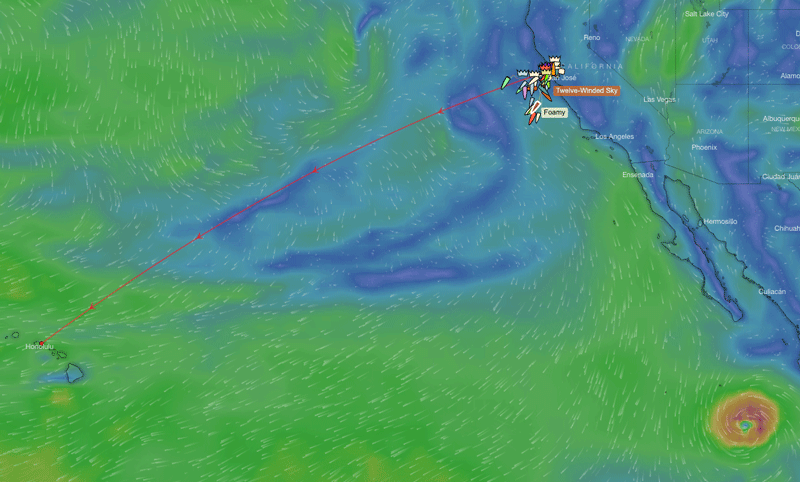
Following the Fleet
The Pac Cup tracker is live. You can download the YB Races app to your Android or iOS device and then add the Pacific Cup race. On a computer, just head on over to yb.tl/paccup2022. Note the four-hour delay.
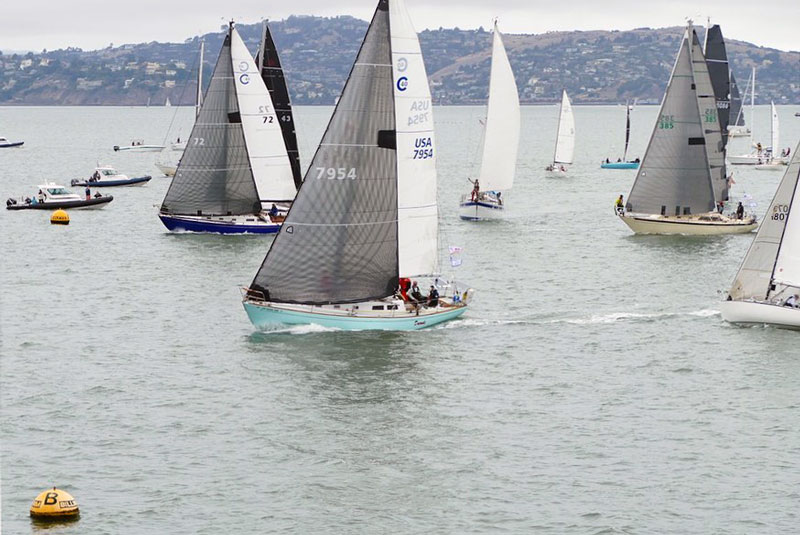
Like the Monday and Tuesday starts, PCYC will live-stream Thursday’s and Friday’s starts on Facebook. The media team is also posting videos and photos on Facebook and Instagram (@paccuprace).
Good Jibes Episode #47: Dawn Riley on Building Good Humans Through Sailing
This week on Good Jibes, Moe Roddy and Dawn Riley chat about Dawn’s legendary life of sailing. Dawn was the first woman ever to manage an entire America’s Cup syndicate, the first American to sail in three America’s Cups and two Whitbread Round the World races, and is a soon-to-be inductee in both the America’s Cup Hall of Fame and National Sailing Hall of Fame.
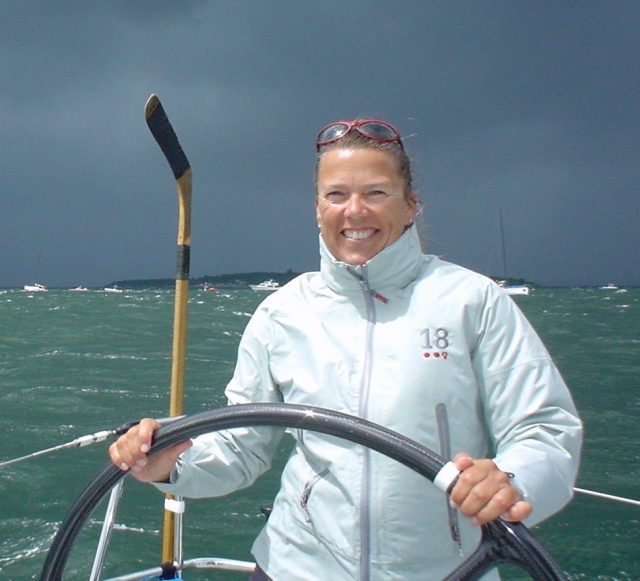
Hear about Dawn’s iconic book Taking the Helm, her favorite racing memories, what she loves about Oakcliff Sailing, what shaped her as a young sailor, and her thoughts about creating more equality in women’s sports.
This episode covers everything from racing around the world to moving sports forward. Here’s a small sample of what you will hear:
- Did Dawn participate in a junior sailing program as a kid?
- What was her first race?
- How did it feel being the only woman on the America’s Cup team?
- What does Dawn remember most about her races?
- How did she launch her own AC Challenge?
- What is Oakcliff Sailing?
- How does Dawn give back to women’s sports?
- Short Tacks: Where is her favorite place in the world to sail?
Learn more at OakcliffSailing.org.
Listen to the episode on Apple Podcasts, Spotify, Google Podcasts, and your other favorite podcast spots — follow and leave a 5-star review if you’re feeling the Good Jibes!
Gain Offshore Skills With Shearwater Sailing
Monterey to San Francisco
Atalanta sails again, from Monterey to San Francisco and back on July 30-31. Each leg takes 15-18 hours. Join us for one or both legs. Lunch is included and return transportation is available at either end. Prices are per person, maximum of six. $395 per person. 20% discount on the return leg for crew joining both legs.
Monterey to Santa Barbara
Join Shearwater on a trip south to the quintessential beach town of Santa Barbara, with a stop in Morro Bay on the way. For those looking for an upwind adventure, join us for the trip north — good for those curious to experience what it’s like to bring a boat north in the summer. $880 for the trip south, August 13-14. $595 for the trip north, August 16-17. $1295 for the full adventure, August 13-17.
Perfect for those looking to gain offshore experience. We will be teaching offshore sailing underway, from navigation to sail handling to helming to cooking at sea. Active participation is encouraged! Click here for more info and booking.
Baja Ha-Ha Poobah Shares Advice — “Create a Life You Don’t Need a Vacation From”
There are many reasons to sail to Mexico with the Baja Ha-Ha in October, and the Grand Poobah shares this story from Beverly van de Velde and her husband Rolf, who did the 2019 Baja Ha-Ha aboard their Marina del Rey-based Lagoon 400 Rochambeau. Beverly and Rolf have just returned from a second cruise in Mexico.
“This time we spent exactly six months sailing from Los Angeles as far south on mainland Mexico as Barra de Navidad,” reports Beverly, “then north to Mazatlán on the mainland, then over to La Paz on the Baja side, and lastly farther north into the Sea of Cortez.
“We did this all while working full-time ‘reboatly,’ and with one dog and two cats.”
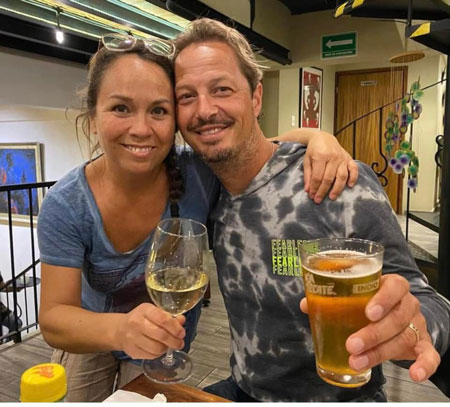
“We met several other like-minded couples who were also working ‘reboatly,’ often with pets. We all understand the essence of living life to the fullest.
“We did our cruise in a mostly environmentally friendly way, by converting power from solar panels, even for making fresh water.
“We covered a total of 3,025 nautical miles and spent 85 days and 69 nights at sea going from place to place. Six days and five nights was the most time we spent at sea without stopping.
“The following is a list of our longest passages: 1,382 nm from Los Angeles to Barra de Navidad; 141 nm from Barra to La Cruz and Punta de Mita, Banderas Bay; 164 nm from Punta de Mita to Mazatlán; 233 nm from Mazatlán to La Paz; 318 nm from La Paz to Bahia Magdalena; 256 nm from Man O’ War Cove, Bahia Magdalena, to Bahia Tortuga; 420 nm from Bahia Tortuga to Marina del Rey.”
(Note from the Poobah of the Ha-Ha: Given enough time, it’s easy to cover the same route as the van de Veldes’ with very few overnights. Sixty-nine is a tremendous amount.)
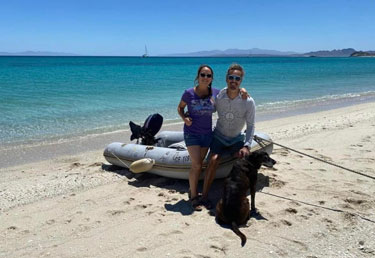
“Rochambeau is our floating home that takes us to special places that most people never get to experience. We’re so grateful for the opportunities and friendships, as well as for having bosses who understand our lifestyle doesn’t have to compete with our careers.
“Now it’s time for us to reconnect with friends and family while we explore our backyards between Los Angeles, Catalina, and Mammoth Lakes.”
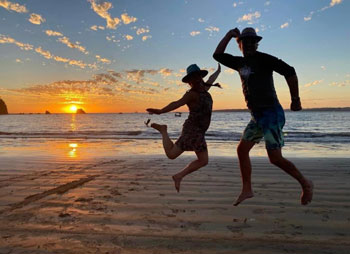
“Create a life you don’t need a vacation from. Become the view. Do it now! That’s my advice.
“These pictures represent us living our best lives.”
The Poobah is biased, of course, in thinking that doing the Ha-Ha is the best way to head south, particularly for the first time. For those who are interested, Notice of Rally for the October 31 event can be found here.
For those who hope to work “reboatly,” or want to do homeschooling, Starlink, which reportedly works great everywhere on the coast of Mexico, is a godsend.
Here’s a story about another sailor, Robert Hansen, originally from the East Bay, who sailed south with the Ha-Ha, and never left!
Proposed Oakland A’s Stadium on the Estuary Passes Key Vote on Road to Approval
In another piece of the Bay Area’s changing waterfront puzzle, lawmakers have “changed the designation” for a terminal in the Port of Oakland that may open the door for a new baseball stadium, as well as housing and amenities, to be built in its place.
Critics say that the new construction could usher in major development in an industrial zone, and interfere with the Port’s operations, while advocates for the new stadium say that existing terminals will suffice, and that the new development will be an economic engine for the City of Oakland. The latter is a claim both common and suspect, as Oakland will almost certainly subsidize the new stadium with taxpayer dollars.
Regardless, and ready or not, the Bay Area’s waterfront continues to transform before our very eyes.
Last week, the Bay Conservation and Development Commission voted to allow Howard Terminal, on the south side of the Port of Oakland and inside the Estuary, to change its designation from “port priority use,” and allow it to be used for “other purposes,” clearing the path for the Oakland Athletics to build a new stadium.
The BCDC vote does not mean the stadium project has been completely green-lighted; the vote was the “first in a series of legal hurdles the team would have to overcome before it gets permission to break ground for the project,” according to ABC 7 News. “A’s President Dave Kaval said the vote is a ‘huge win’ for the project.'”
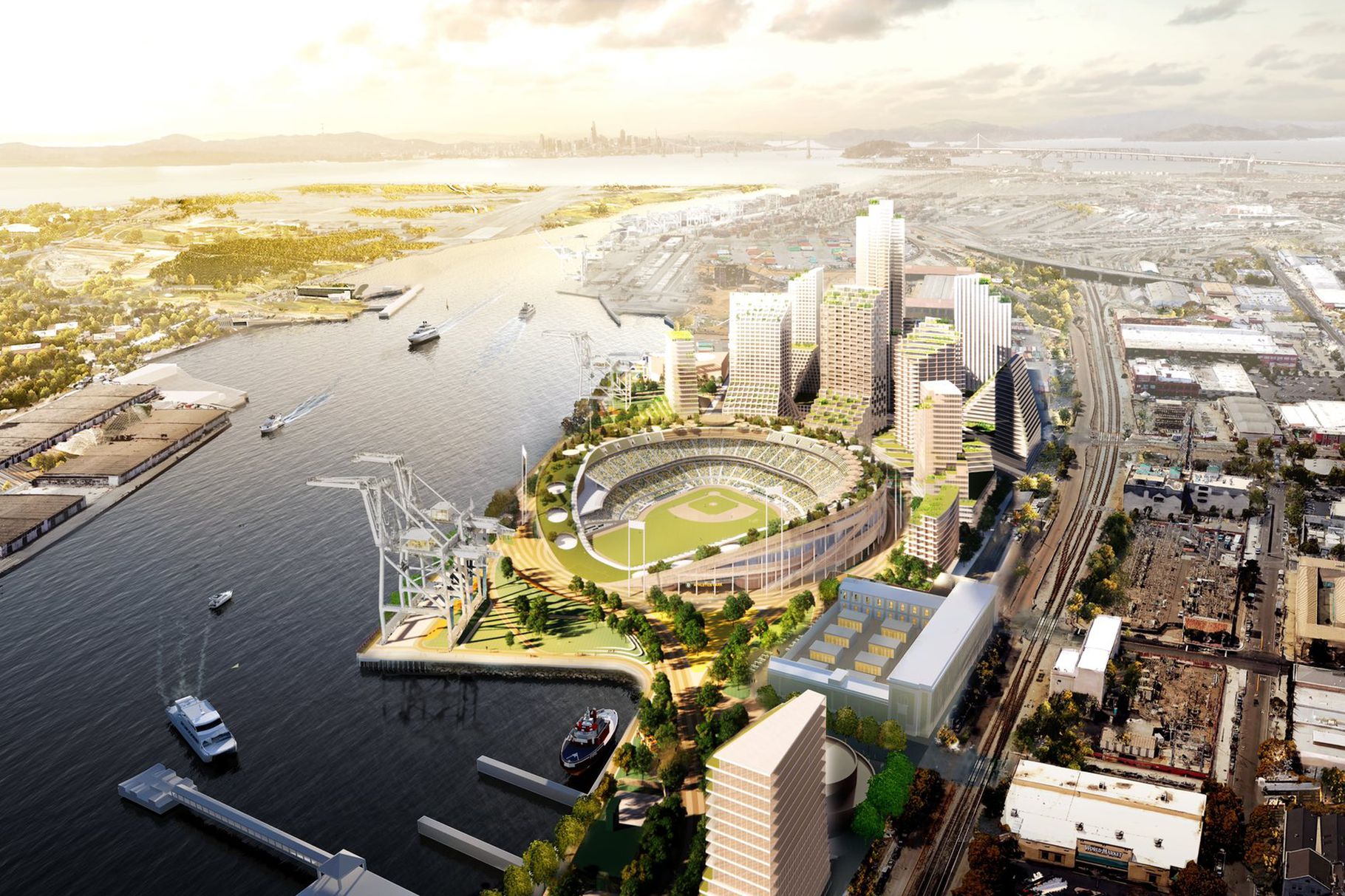
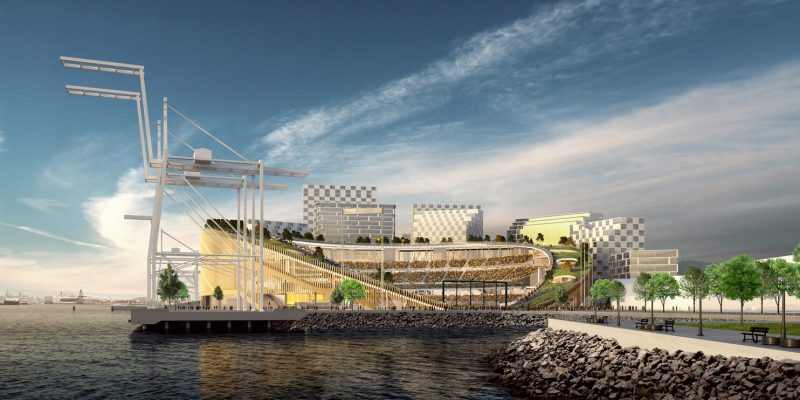
Through what lens should we view the seeming inevitability of a new stadium on the Estuary? Do we lament the further eroding of the working waterfront? Do we use the “G” word, or gentrification — of which projects like the new A’s stadium are the very definition — in a bad way, believing that it makes everything more expensive and more crowded? Do we feel nostalgic for the good old days when the Bay was just the way we liked it?
Or do we herald progress, and say to hell with nostalgia? A new stadium could be kind of cool, and could, with the right lobbying, include docks and anchorages for sailors. Is it possible to support the working waterfront as well as some new development, or are those ideas mutually exclusive?
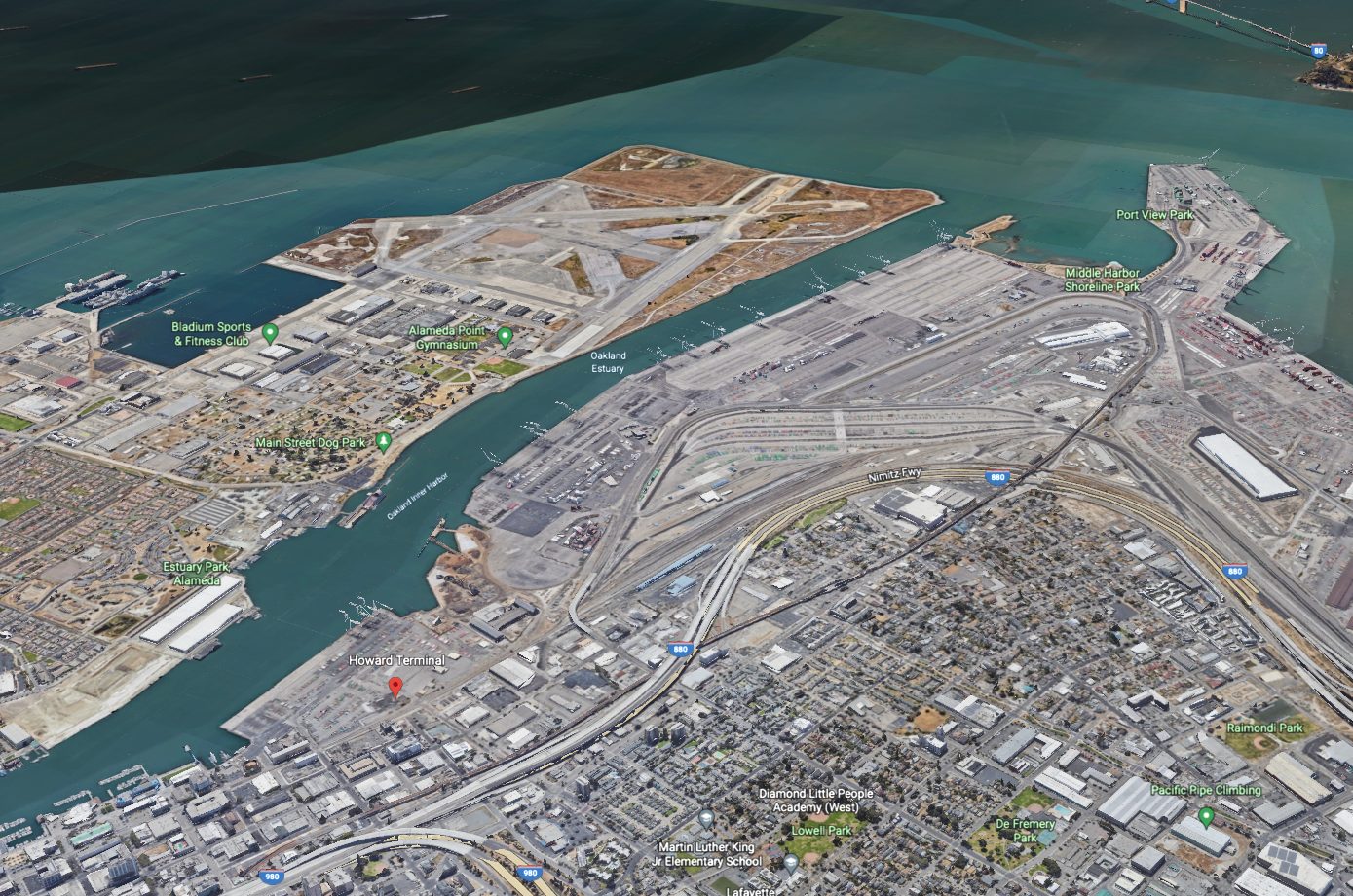
How busy is Howard Terminal, and Oakland’s industrial waterfront in general?
“The Port of Oakland is the third-busiest port in California, but container-cargo volume has hardly budged, rising less than 0.5% since 2005,” writes gCaptain, a website for maritime professionals. “After ranking as the fourth-busiest hub in the US just a few years ago, today, the port’s traffic barely cracks the top 10.”
GCaptain said that although Howard Terminal is no longer used to unload ships, it now serves as a parking lot for trucks, as well as a pop-up container yard and a training site for dockworkers. “For the industry, allowing it to be used for anything other than maritime operations would deal another blow to already-stretched supply chains.”
Erin Wright, a third-generation longshoreman, told ABC 7 News that the maritime community opposes the new stadium project because it would interfere with the shipping and receiving of cargo. “Our port is busier than it’s been in my 33 years. We need [Howard Terminal] for operations. We are using it; we have been using it every day.
“Everyone with a working brain knows that the building of houses in an industrial zone is going to have a huge negative impact on all operations and lead to a downturn and degradation of our seaports,” Wright told ABC 7 News.
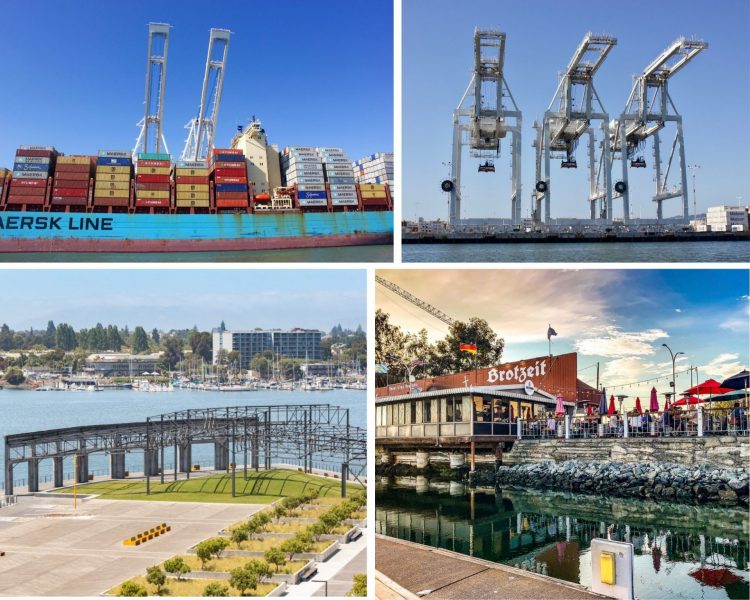
The chief operating officer for the Port of Oakland said that Howard Terminal “is simply not operational (sic) viable nor financially feasible — and it if is not today, it is not going to be in the future,” ABC 7 reported.
Last week, BCDC staff said the Oakland Athletics had demonstrated that removing Howard Terminal from a “priority use” designation “would not detract from the region’s capability to meet the projected growth in cargo, and has demonstrated that the cargo forecast can be met with existing terminals,” ABC 7 said.
Advocates of the new stadium development say that it will be “an economic engine” for the City of Oakland, and generate hundreds of new jobs and millions in tax revenue. This is the mantra of all new sports stadiums, and the veracity of these projects being cash cows is suspect.
Oakland A’s president Dave Kaval promised the team would provide $450 million of community benefits, according to an opinion piece by the Mercury News. “But taxpayers, not the A’s, would foot the bill for those benefits — and the value is minimal because the amount is stretched over 45 years with no adjustment for the lost value due to inflation. The team also wants the city to create a massive tax district affecting property owners along a one-and-a-half-mile-long swath of land to help fund the city services and infrastructure that would be needed to serve the A’s project.
“In essence, Kaval portrays the team as a paragon of charity while proposing using public money to fund the supposed generosity.”
The Mercury News said that taxpayers are still footing the bill for improvements to the Oakland Coliseum that temporarily brought the Raiders back to Oakland from Los Angeles in 1995. The Raiders moved to Las Vegas in 2020.
This is maybe neither here nor there, but how are the always-underdog, ‘Moneyball’ Oakland Athletics doing this season? With a record of 27-55, the A’s are the worst team in baseball.
65-Year-Old Man Dies After Boat Collision Near Angel Island
A man who died after being thrown from his boat after a collision near Angel Island last Thursday has been identified as Michael Wells of Contra Costa County.
“The 65-year-old man was identified by the San Francisco medical examiner’s office on Friday,” NBC Bay Area reports.
To our understanding, the accident is currently being investigated by the San Francisco Police Department and the Marin County Sheriff’s Department.
—————————————
Friday, July 1, 2022: A person has died after a sailboat and a powerboat collided near Angel Island on Thursday. CBS Bay Area reported that the collision between a sailboat with four people aboard and a 25-ft powered center-console vessel with one person aboard was reported to the USCG at around 2:09 p.m. Thursday.
“The person on the center-console vessel fell into water and was rescued by people on sailing vessel,” CBS wrote. “Authorities said the victim was unresponsive. A Golden Gate Coast Guard crew took control, bringing the individual to emergency responders in Tiburon for medical treatment.
“San Francisco police later confirmed that in spite of life saving efforts by bystanders and medical personnel, the victim succumbed to their injuries at the scene.”
